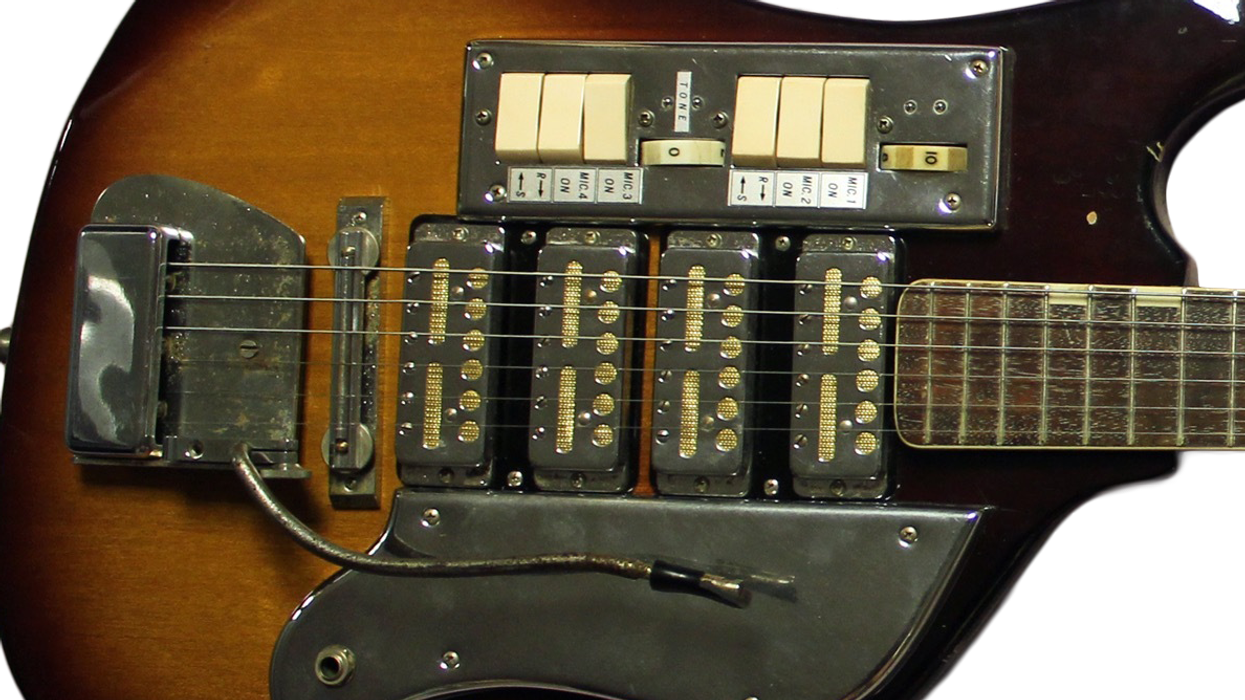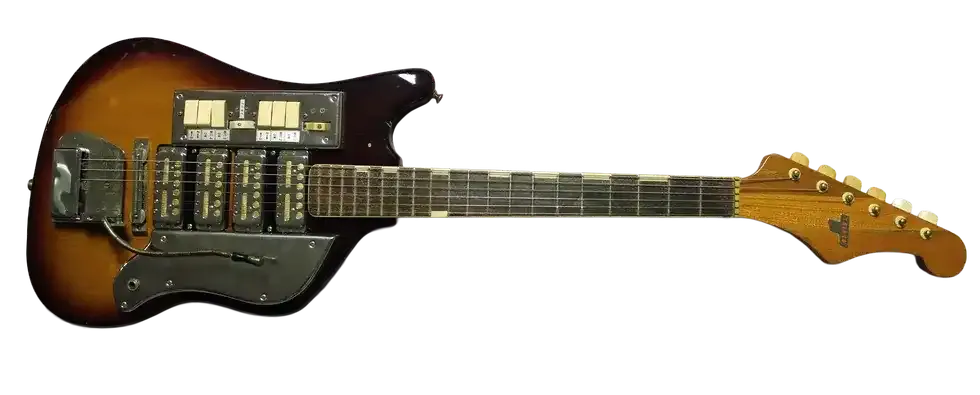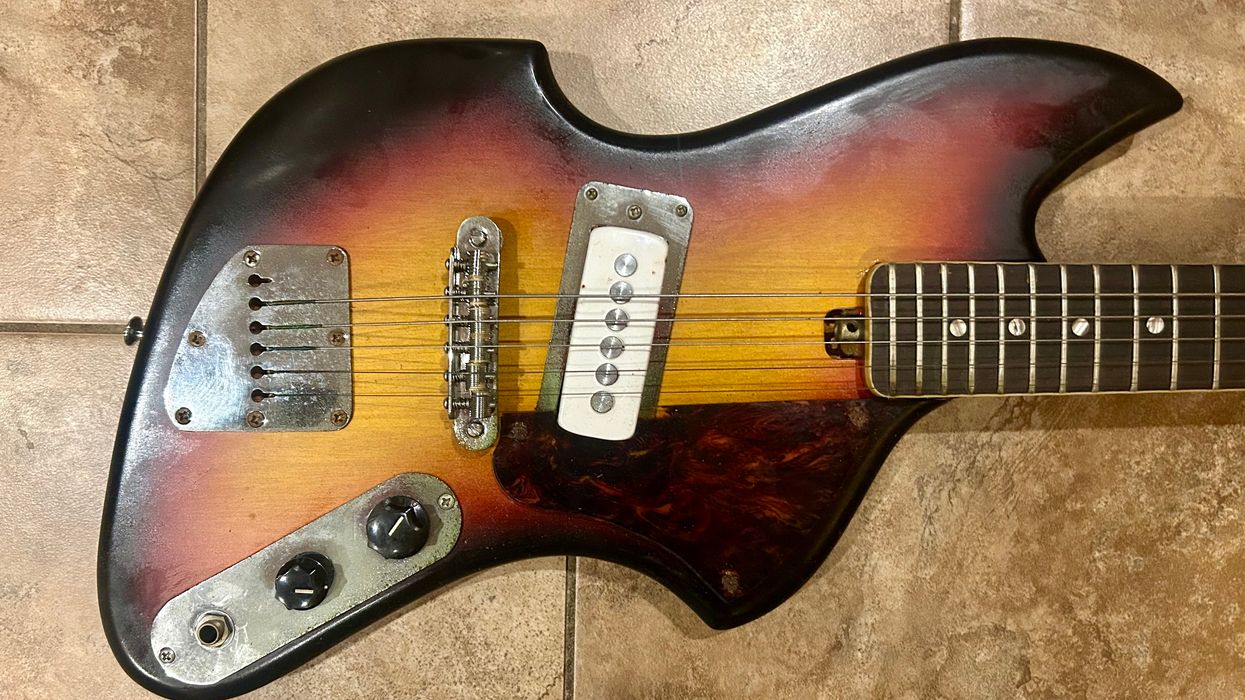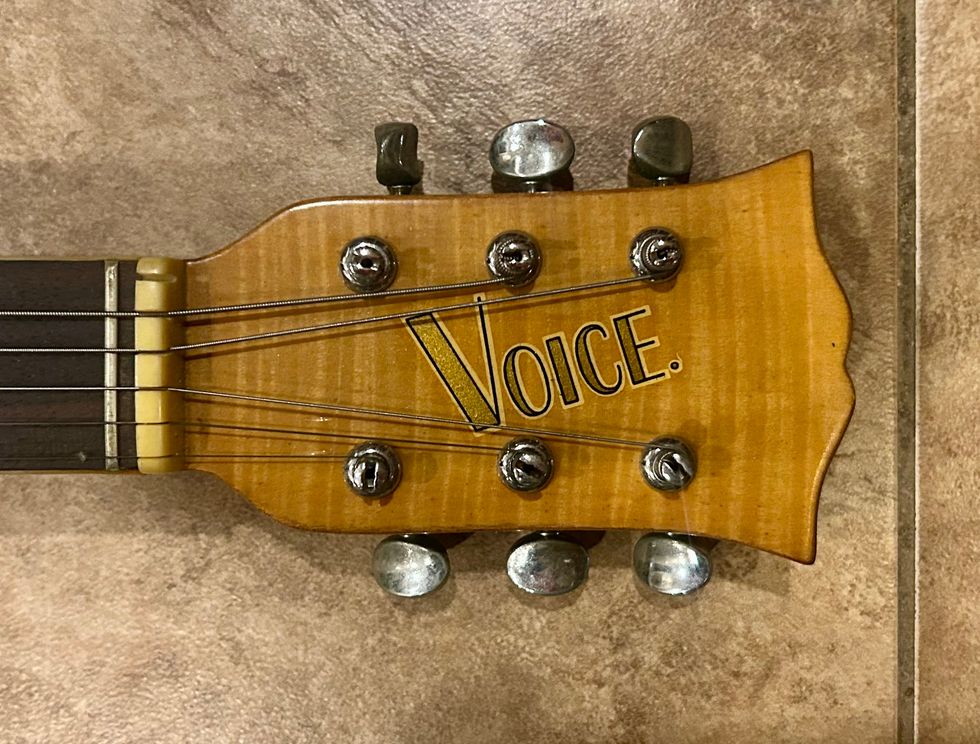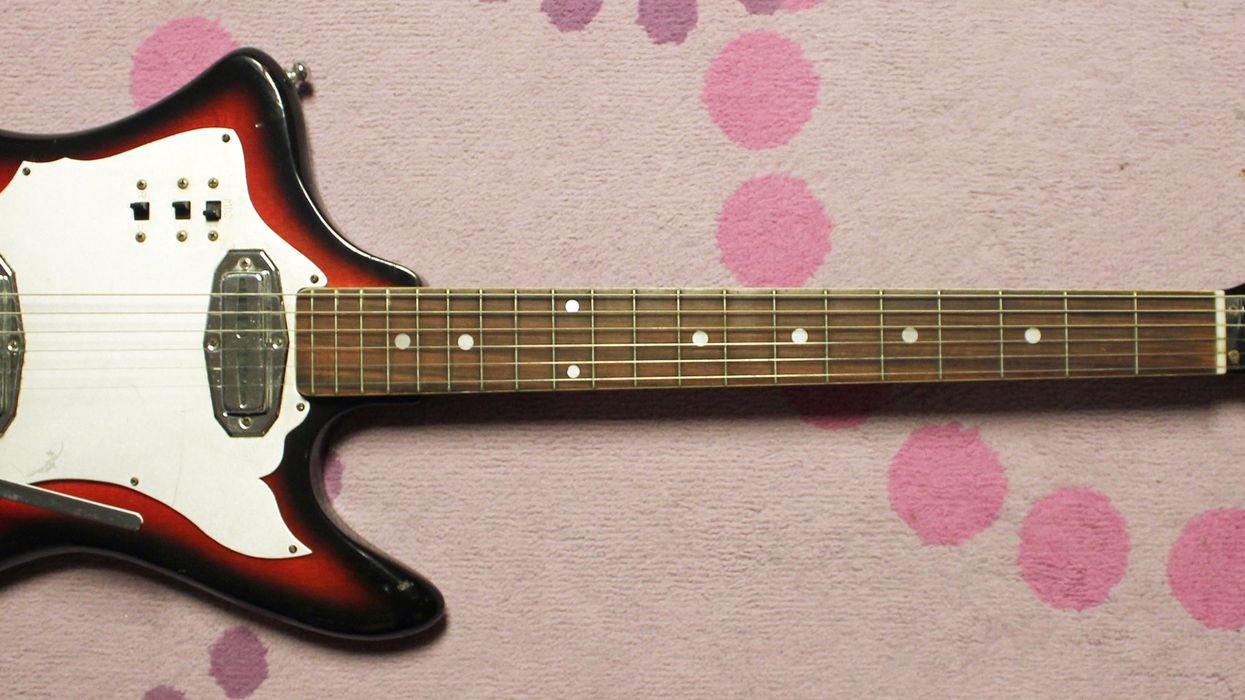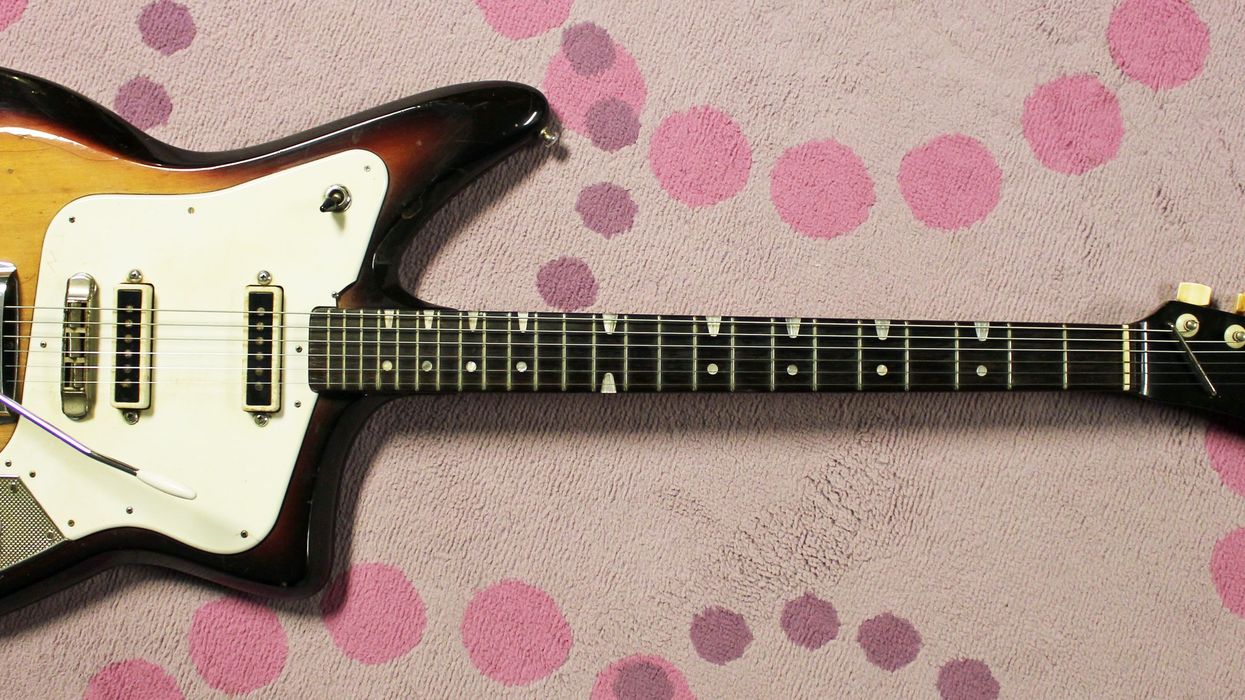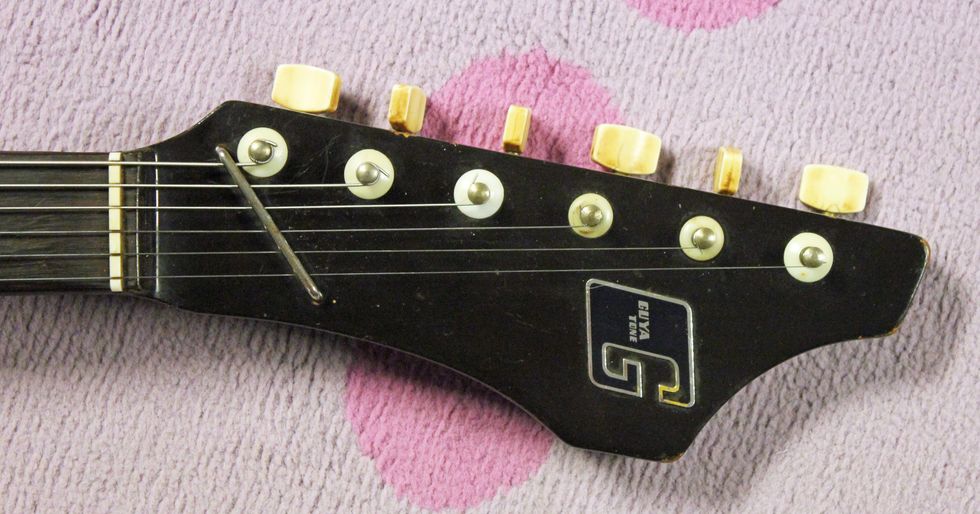So many novel guitar ideas have been forgotten to time. If you’re a guitar designer and you think you’ve come up with some epic concept, chances are that someone somewhere already tried it. This month, I was thinking about a rare vintage Guyatone that featured a design that still seems novel when builders toy with it today: the movable pickup.
This instrument probably wasn’t the first guitar to use something like a movable pickup. It’s worth noting that DeArmond’s famed Rhythm Chief pickups, which debuted in the 1940s for mounting on round-soundhole acoustic guitars and hollowbodies, offered a pole along which the pickup could be slid to different positions beneath the strings. But for some, the LG120T was probably a wild introduction to varied sonic possibilities. Introduced in the Japanese domestic market in May 1966, the LG120T was a bit like those old science kits you could buy as kids. Maybe you remember those old sets where you could connect wires and make lights flash?
“The LG120T was a bit like those old science kits you could buy as kids.”
The body is similar to that of the Kent guitars offered here in the States, but the electronics were unique for Guyatone. Check out those mini switches above the pickups. They offer options such as “cool” and “hot.” But what they really do is select phase, tone cut, and pickup options. Those two switches really provide a lot of sounds.
Then, of course, for even more tones, you have the movable neck pickup, which is attached to the pickguard via two screws, allowing it to rotate. Sliding the pickup around accentuates the bass or treble response. It’s a subtle change in tone, but it’s still cool and innovative for the time.
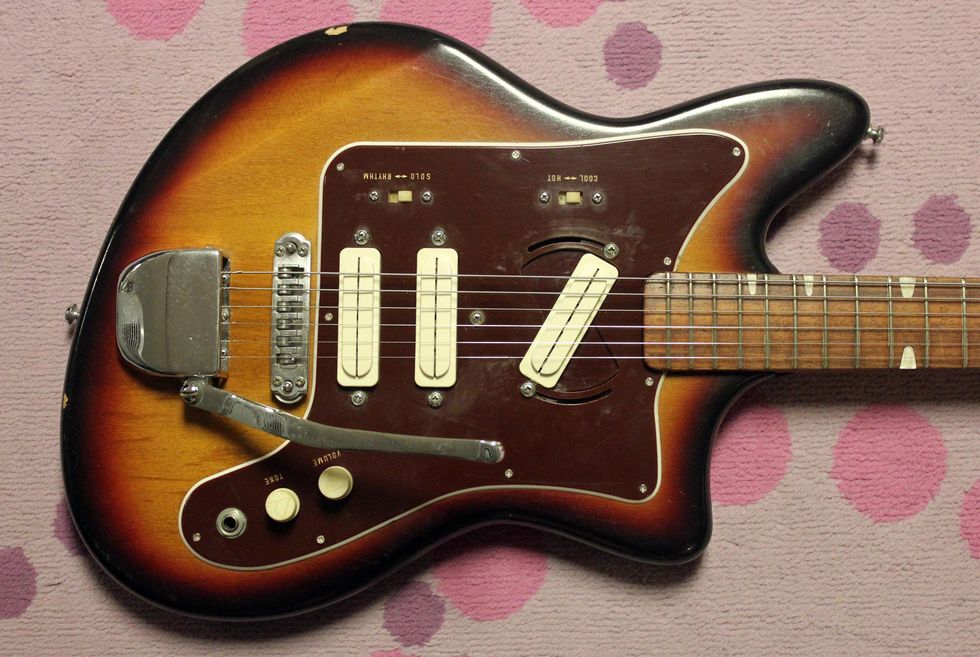
Look closely and you’ll see the “solo/rhythm” and “cool/hot” switches, plus those fretboard inlays are pretty hip. But the neck pickup is the real showstopper.
There were problems with the design, though. The pickguard on these guitars often cracked due to movement, and the neck pickup wiring is prone to disconnect after many rotations. That was the case with this month’s guitar when I acquired it, so it needed to be rewired at the neck.
Otherwise, the LG120T featured some typical Guyatone design cues of the time, such as a solid wood body and decent tuners. This model clocked in at the lower end of the price range and cost 16,000 yen back in the day. In comparison, the awesome LG180T Telstar was priced at 32,000 yen. The tremolo was somewhat unique on this model. It has a cool-looking arm with a rounded end. It’s a little detail, but I like it! This model also featured the roller bridge found on the much more expensive Guyatone Sharp 5. But man, those old roller bridges can be tough to set up!
There were two types of pickups featured on the LG120T, but they are basically the same. This guitar features the plastic covers with a slit across the front, and some models had a more open design where you could see the magnet slugs.
These LG120T guitars only lasted for a year or two. By 1967, Guyatone was really starting to struggle. Their guitars might have been popular, but they were being relegated primarily to the Japanese market. It’s sort of a bummer, but that’s business, I suppose. It’s no surprise that these days they’re really hard to find—especially in working condition. Every now and then, you can still see a new take on the movable pickup design, even though it’s never caught on en masse.
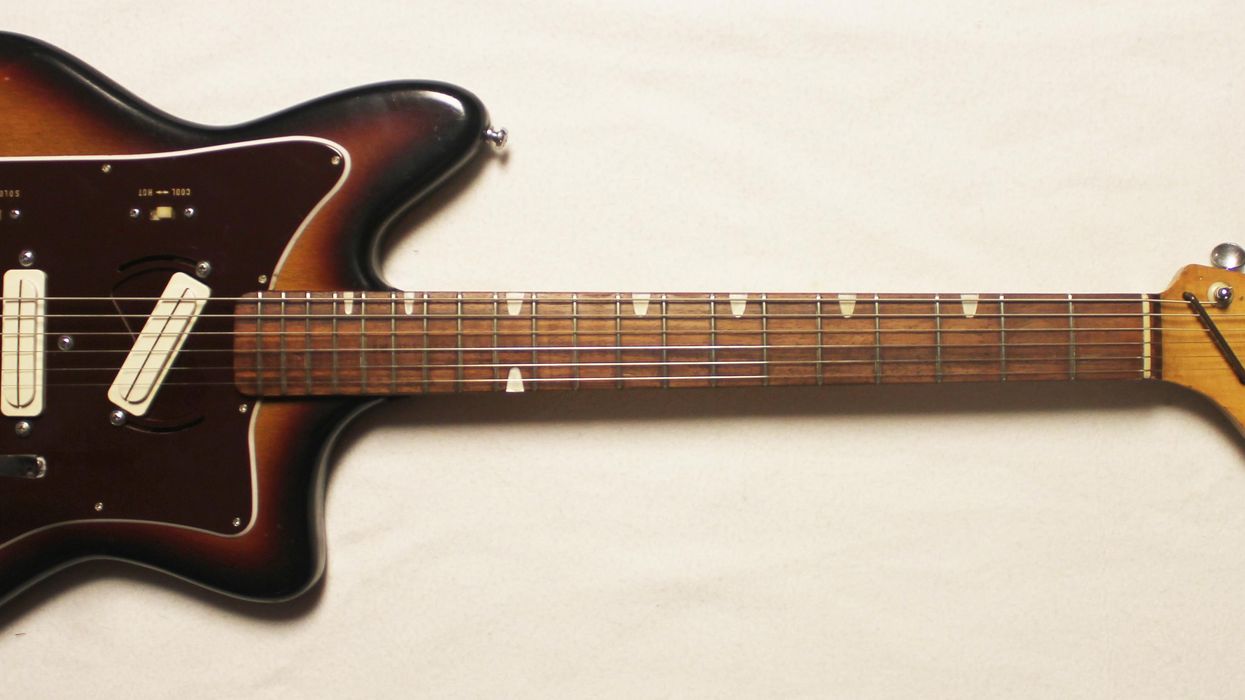

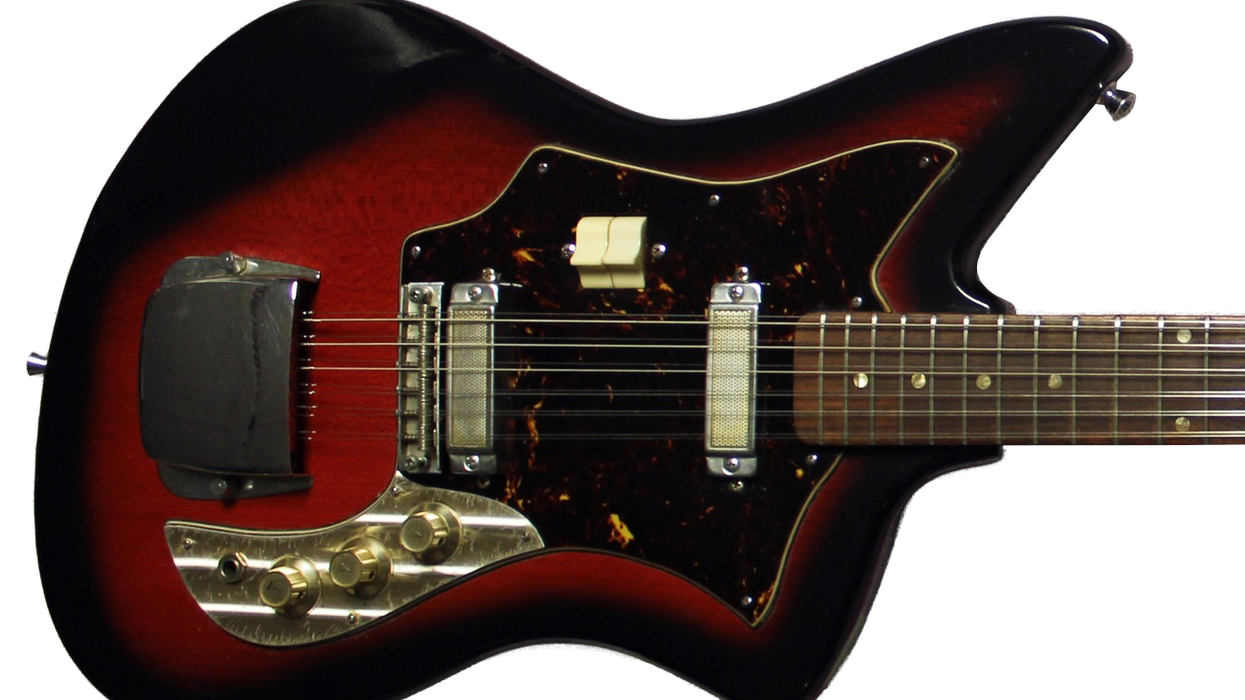
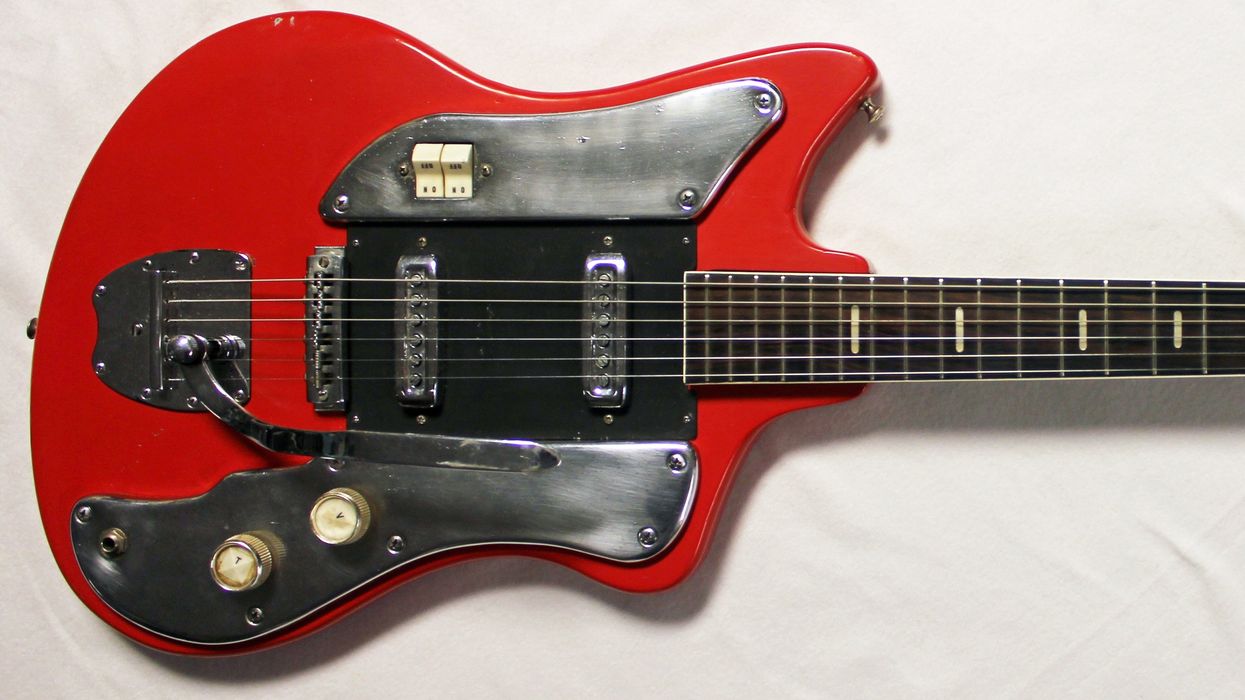
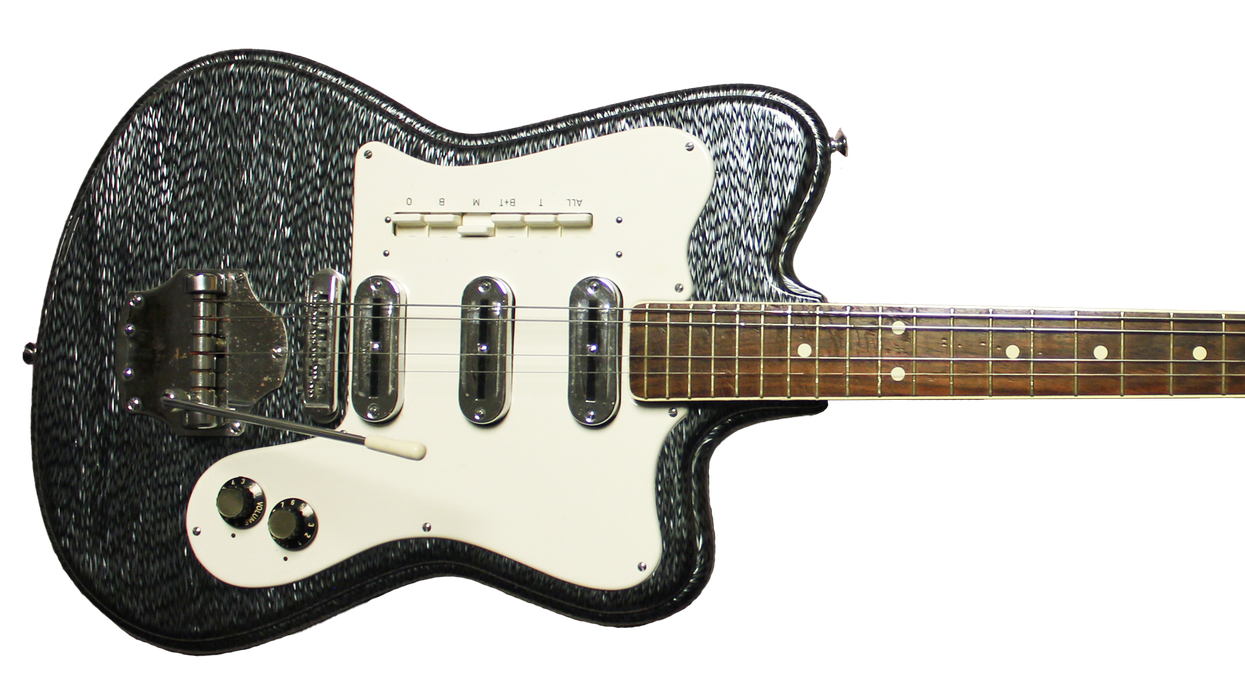
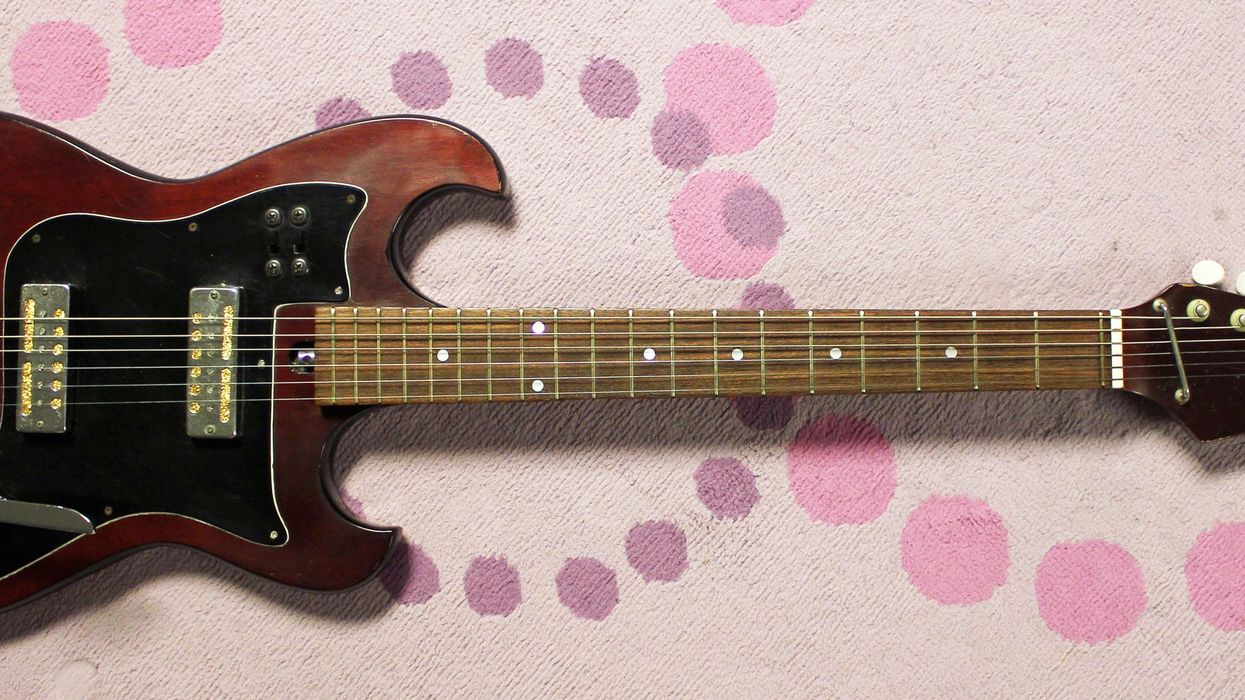
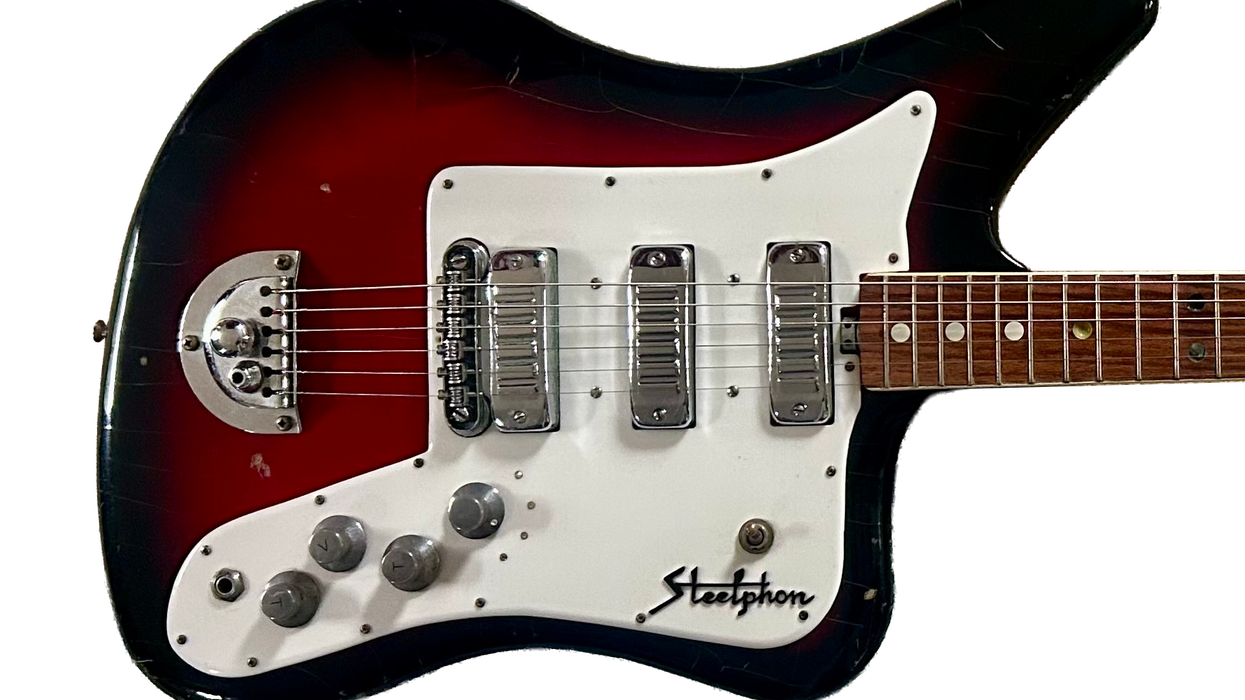
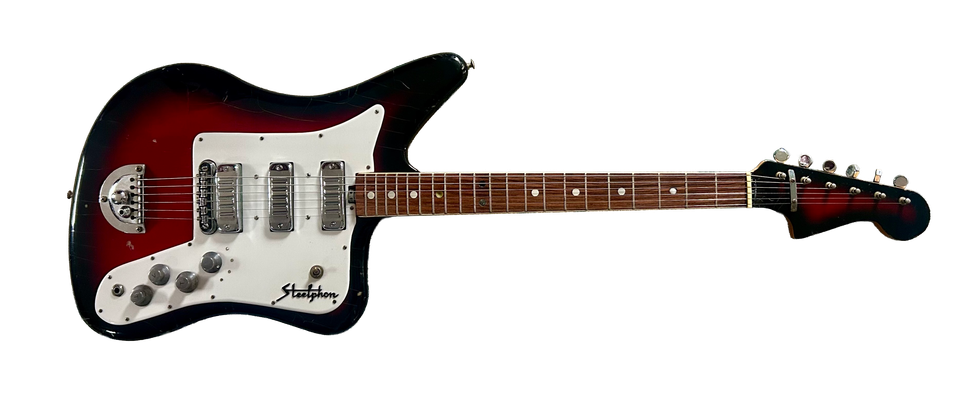 Then, in the dream, I “awoke” and realized I was back in my bedroom, and it was all just a dream. The kicker is that I was still dreaming, because that “paddle” guitar was suddenly in my hands—then I woke up for real! How about that misadventure?
Then, in the dream, I “awoke” and realized I was back in my bedroom, and it was all just a dream. The kicker is that I was still dreaming, because that “paddle” guitar was suddenly in my hands—then I woke up for real! How about that misadventure?





